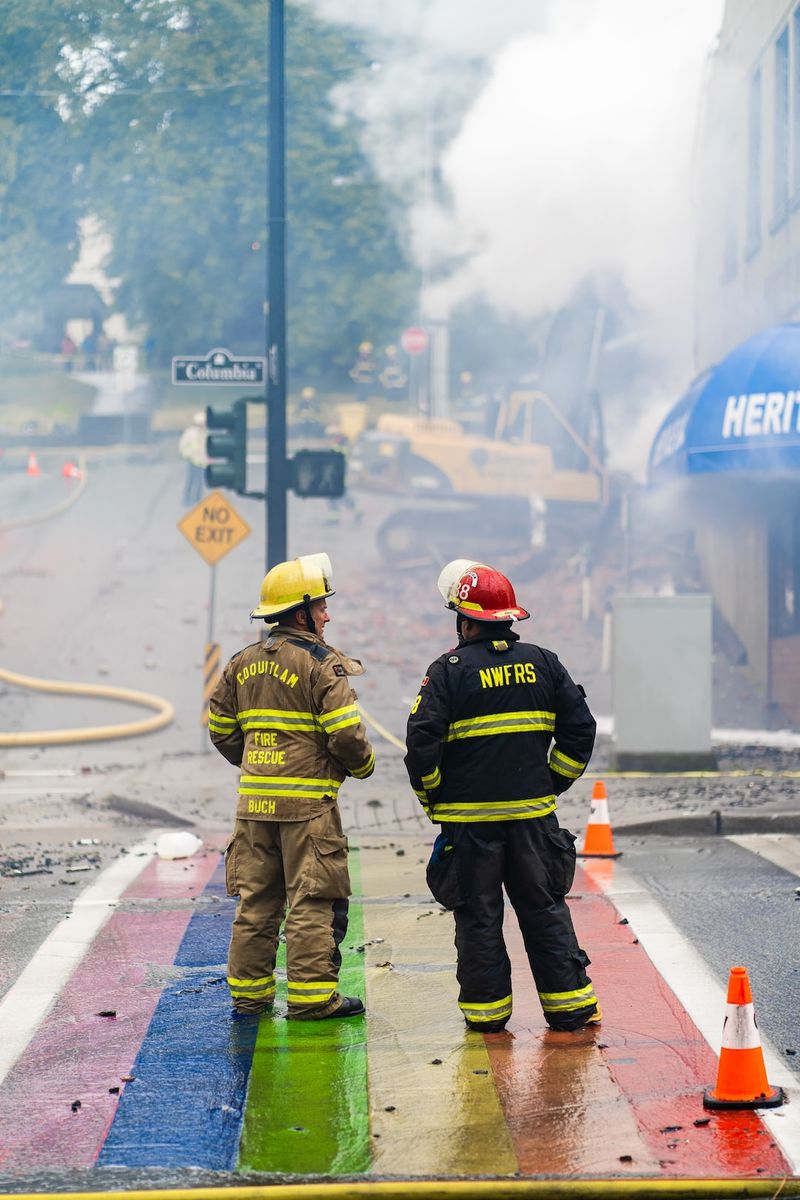Avis d’évacuation maintenus sur la Côte-Nord et en Abitibi
Introduction
Several towns in the Côte-Nord and Abitibi-Témiscamingue regions of Quebec continue to face a significant threat from raging forest fires in the northern parts of the province. As the fires are still deemed “out of control” by local authorities, evacuation orders remain in place for many areas. With dozens of active fires and limited resources to combat them, the situation is precarious and uncertain.
The Situation in Sept-Îles
While the news from Sept-Îles is somewhat encouraging, with no southward progression of the fire line, an inferno located only 7 km from the city continues to burn uncontrollably. As a result, thousands of residents have been forced to evacuate. The mayor of Sept-Îles, Steeve Beaupré, emphasized the priority of protecting citizens and stated that the evacuation orders for the Moisie, Plages, and Lac Daigle areas, as well as the precautionary alert for residents of the Sainte-Famille sector north of Rue Comeau, will remain in effect. Although there is ongoing concern, Mayor Beaupré remains optimistic, hoping for imminent precipitation from Mother Nature to aid in containing the flames.
Reinforcements Arrive
In an effort to provide assistance, nearly 300 military personnel have arrived in the affected regions, with some assigned to the firefighting efforts. French firefighters are also expected to join the response teams. The reinforcement of manpower is necessary due to the lack of personnel grappling with approximately 20% of the active fires.
The Situation in the Côte-Nord
The forest fires on the Côte-Nord have led to the closure of the sole road link to Fermont. The 389 Highway is completely shut down between kilometer 11 in the Rivière-aux-Outardes sector and kilometer 110 due to multiple wildfires. The heavy smoke in the area prevents safe patrolling, according to the Society for the Protection of Forests Against Fire (SOPFEU).
The Situation in Abitibi-Témiscamingue
In Abitibi-Témiscamingue, several cities and towns are affected by the fires, with around thirty currently burning. While there are no immediate reports of danger in Val-d’Or, numerous areas, especially in the eastern part of the municipality, have been evacuated. The municipality of Saint-Lambert in Abitibi has declared a state of emergency and ordered immediate evacuation. The Lac-Simon Indigenous community has also had to evacuate, with 600 people finding refuge in a sports center in Val-d’Or. Overall, there are approximately 160 active fires across the province of Quebec, with dozens classified as “out of control.”
The Deteriorating Situation
The air quality is rapidly declining, and later today, unfavorable winds are predicted, which could worsen the already dire scenario. Firefighters have been deployed to Normétal, where a particular fire is causing additional concern. Reinforcements from abroad, including a team from France, are expected to provide much-needed support to their Quebec counterparts. François Bonnardel, the Minister of Public Security, will visit Abitibi on Tuesday to meet with those affected by the forest fires and assess the situation.
The Impact on Schools
The forest fires have compelled several educational institutions to close temporarily. The Or et de Bois School Service Center in Abitibi has suspended classes for students at La Concorde High School, the La Concorde Center, and Le Carrefour Polyvalent on Tuesday. The Lac-Abitibi School Service Center announced the closure of several establishments, including the Normétal Pavilion, until further notice. However, elementary school students at the Dupuy Pavilion can still attend, provided parents take responsibility for transportation in the morning. School bus service is suspended in the northern sector, affecting routes 1, 2, 3, 4, 5, 8, and 41. No transportation services are available to the Academy and Polymo areas until further notice.
Editorial and Advice
Addressing the Uncertainty
The ongoing forest fires in the Côte-Nord and Abitibi-Témiscamingue regions highlight the high level of uncertainty and the urgent need for resources and coordination. With fires still raging and under limited control, the safety of residents remains a primary concern. It is crucial for authorities to communicate effectively and transparently, ensuring that the affected population is aware of evacuation orders and any potential risks.
Furthermore, it is essential to acknowledge the potential long-term impacts of these fires, not only in terms of human safety but also in relation to the environment and wildlife. Forest fires have the potential to cause irreparable damage to ecosystems and biodiversity. The provincial government should prioritize both short-term firefighting efforts and long-term initiatives to prevent such catastrophic events in the future.
International Collaboration
The arrival of military personnel and the collaboration with firefighters from France demonstrate the importance of international cooperation in times of crisis. This collaboration not only provides additional resources but also fosters knowledge sharing and strengthens relationships among first responders. It is commendable to see the solidarity among nations in the face of natural disasters, and it is a reminder that global challenges require collective action.
Investing in Firefighting Capabilities
Given the increasing frequency and severity of forest fires, it is imperative for Quebec and other regions to invest in firefighting capabilities and resources. This includes ensuring an adequate number of trained firefighters, modern equipment, and advanced technologies for early detection and prevention. By bolstering these measures, governments can enhance their ability to combat and mitigate the impact of forest fires.
Moreover, it is crucial to prioritize research and innovation in fire management. Developing new strategies, techniques, and technologies can help limit the spread and destructive potential of such fires. Proactive measures, such as controlled burning and landscape management, should also be explored to reduce the risk of wildfires in vulnerable areas.
Public Awareness and Preparedness
Public education and awareness campaigns are essential to ensure that residents are well-informed and adequately prepared for potential emergencies. This includes educating individuals about fire safety, evacuation procedures, and the importance of having emergency kits and plans in place. Collaboration between government agencies, community organizations, and the media is crucial in disseminating accurate and timely information.
In conclusion, the forest fires in the Côte-Nord and Abitibi-Témiscamingue regions of Quebec have brought about significant challenges and uncertainties. Adequate resources, effective communication, collaborative efforts, and investments in firefighting capabilities are vital to address and mitigate the impact of such devastating crises. By working together and adopting proactive measures, we can better protect our communities and natural environment from the destructive forces of wildfires.

<< photo by Nicola Barts >>
The image is for illustrative purposes only and does not depict the actual situation.
You might want to read !
- Daniel Ricciardo Returns to Formula 1 with AlphaTauri, as Nyck de Vries Departs
- Zoom and Theta Lake Deepen Partnership in Cybersecurity Enhancements
- Elizabeth Holmes—Theranos Fraudster And Ex-Billionaire—Gets Convicted in Landmark Case
- Turkey’s Changing Outlook: Exploring the Reasons behind Its Shift on Sweden’s NATO Membership
- The Top Amazon Prime Day Deals You Don’t Want to Miss
- BBC Suspends Star and Calls in Police: Investigating Allegations of Misconduct
- Canada’s Unprecedented Wildfires: François Legault Expresses Concern
- Forest Fires: “Unprecedented” Concerns from François Legault
- Canadian Soap Opera Star Andrea Evans: A Life Dedicated to Drama and Success
- Sen. Chuck Schumer Urges FDA to Investigate PRIME Energy Drinks: Ensuring Consumer Safety and Regulation in the Beverage Industry
- Canadian Tennis Pro Christopher Eubanks Shocks Stefanos Tsitsipas, Advances in Fairytale Run




